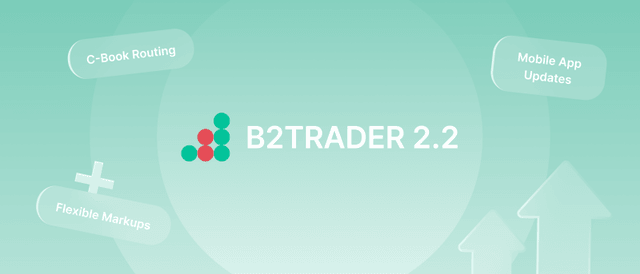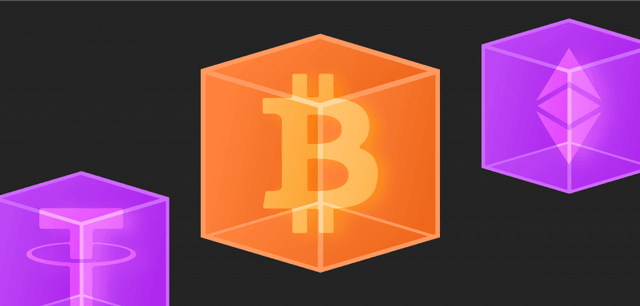Tick Scalping: What is It, and How Does it Work?

In the world of high-speed trading, every tick counts — literally. Tick scalping is a razor-sharp strategy elite traders use to extract micro-profits from the smallest market moves. While the gains may be measured in fractions, the discipline, precision, and technology behind tick scalping are anything but small.
Whether you're a curious beginner or a performance-driven trader looking to refine your edge, this guide breaks down what tick scalping is, how it works, and whether it's the right approach.
Key Takeaways
Tick scalping is a high-frequency strategy focused on small, quick profits from one- or two-tick moves.
It relies on advanced tools like DOM, tape reading, and tick charts to read real-time market activity.
The strategy demands fast execution, tight risk control, and laser focus.
What is Tick Scalping?
At its heart, tick scalping is about speed and precision. It's an ultra-short-term trading style where you aim to profit from the smallest possible price changes – often just one or two "ticks". What's a "tick"? It's simply the minimum amount a trading instrument's price can move up or down.

For example, take the popular E-mini S&P 500 futures. One tick there is a 0.25 point move, which usually translates to $12.50 per contract. A tick scalper isn't looking for big wins; they're trying to capture that tiny $12.50 (or similar small amounts) over and over again throughout the day. The idea is that these micro-profits add up through a high volume of trades.
This is much faster than traditional scalping, where trades might last several minutes. With tick scalping, you're often holding a position for just moments. The strategy is about reacting instantly to what's happening right now in the order book – watching the flow of buy and sell orders, spotting imbalances in liquidity, and exploiting tiny, fleeting gaps between the bid and ask prices.
That's why tick scalpers heavily rely on tools showing Level 2 data, the time-and-sales feed (the "tape"), and the depth-of-market (DOM) display to see the real-time market pressure.
Because the profit targets are so small, there's virtually no room for error. This style demands incredibly fast execution, direct access to the market (DMA), and often, having your trading setup physically close to the exchange's servers (co-location) to minimise delays. You'll find institutional players and highly skilled retail traders using either automated algorithms or manual trading with hotkeys on specialized, high-performance platforms to operate at this speed.
How Tick Scalping Works — Step-by-Step Breakdown
Tick scalping is all about exploiting the smallest price movements — often just one or two ticks — with high speed and precision. Below is a step-by-step breakdown of how a typical tick scalping trade is executed from start to finish.
Have a Question About Your Brokerage Setup?
Our team is here to guide you — whether you're starting out or expanding.
Step 1 — Choose the Right Market Conditions
Tick scalping thrives in highly specific market environments. The ideal conditions include high-liquidity instruments such as futures contracts (like the E-mini S&P 500 or Nasdaq), major Forex pairs, or large-cap equities with heavy volume and tight bid-ask spreads.
Scalpers typically operate during peak hours — such as the opening and closing sessions — when the volume is thick, spreads are narrow, and volatility is elevated but not erratic. Controlled volatility is key: enough movement to create opportunities, but not so much that it introduces unpredictable risk.
Step 2 — Monitor Order Flow and Market Microstructure
Rather than relying on lagging indicators or chart patterns, tick scalpers read the market in real time through tools like the depth of market (DOM), the time-and-sales window, and tick or footprint charts. These tools provide insight into order flow — who’s buying, who’s selling, and how aggressively.
The scalper looks for subtle signals like buyers stacking the bid, large orders absorbing volume (so-called “iceberg” orders), or sudden shifts in momentum. This order flow analysis forms the basis of every trade decision, allowing the tick trader to anticipate very short-term price movements.
Step 3 — Enter the Trade
Once an imbalance or setup is detected, the trader must act quickly, often within seconds. Execution is usually done via hotkeys or pre-loaded orders to minimise delay. For example, suppose a wave of aggressive buying hits a thin ask.
In that case, the scalper may enter with a marketable limit order or hit the ask directly, anticipating a one- or two-tick move before momentum fades. Precision is critical here; the setup must be clear and the timing flawless.
Step 4 — Place an Immediate Exit (Profit and Stop)
In tick scalping, the exit plan is just as important as the entry, and it’s defined immediately. The profit target is typically one or two ticks, and the stop loss is equally tight, rarely more than a couple of ticks.
Many scalpers use bracket or OCO (One-Cancels-Other) orders to automate both the target and stop, ensuring consistency and removing emotion from the decision.
This strict structure allows the trader to manage risk efficiently while focusing on execution quality.
Step 5 — Monitor Execution and Adjust if Needed
After entry, the scalper closely watches the price action. The trade is closed for a small gain if the market responds quickly. If the move stalls or turns, the trader may “scratch” the trade (exit at breakeven) or take a small predefined loss.
There is no room for hesitation or emotional attachment — trades must work quickly or be abandoned. Scalping requires razor-sharp discipline and a willingness to cut losses without second-guessing.
Step 6 — Rinse and Repeat
The core philosophy of tick scalping is repetition. Each individual trade yields only a small profit, but the gains compound over dozens — sometimes hundreds — of trades in a session.
Scalpers often aim for a high win rate (70–90%), supported by consistent execution and tight risk management. The goal isn’t to catch large trends, but to build equity gradually and systematically by exploiting short-lived inefficiencies in the order book.
Methods and Tools Utilised in Tick Scalping
Tick scalping is one of the most execution-sensitive forms of trading, requiring precision, speed, and the ability to read market microstructure in real-time.
To consistently succeed in this environment, scalpers rely on a combination of specialised methods and technical tools that allow them to detect, act on, and manage ultra-short-term trading opportunities.
Power your Brokerage with Next-Gen Multi-Asset & Multi-Market Trading
Advanced Engine Processing 3,000 Requests Per Second
Supports FX, Crypto Spot, CFDs, Perpetual Futures, and More in One Platform
Scalable Architecture Built for High-Volume Trading

Depth of Market (DOM) / Level 2 Quotes
The Depth of Market (DOM) interface, or Level 2 data, is the scalper's central command station. It shows real-time bid and ask sizes at each price level, allowing the tick trader to see where liquidity is stacked, where it's thin, and where large limit orders might act as support or resistance.

Scalpers use the DOM to assess market pressure (e.g., bid pressure vs. ask pressure), detect spoofing or icebergs, and identify moments when the price will likely tick up or down based on supply/demand imbalances.
Time and Sales (Tape Reading)
Also referred to as the "tape," the Time and Sales window shows the actual executed trades — the last price, size, and whether they hit the bid or lifted the ask. Tape reading helps confirm what the DOM is suggesting.

For example, if a large bid is visible on the DOM, but the tape shows sellers aggressively hitting the bid, the support may be weaker than it appears. Experienced scalpers use the tape to detect aggression, hidden orders, and short bursts of momentum before they appear on price charts.
Tick Charts and Footprint Charts
Tick scalpers rarely use traditional time-based charts. Instead, they rely on tick charts, which plot prices based on a set number of transactions (e.g., every 100 trades) rather than time intervals. This gives a clearer picture of real activity during fast markets.

Even more advanced are footprint charts, which display volume at each price level within a candle — including how much volume occurred on the bid vs. the ask. These tools help scalpers spot key areas of absorption, exhaustion, and transitions in microstructure.
Hotkeys and Order Routing Tools
Execution speed is everything in tick scalping. Most professional scalpers don't click buttons manually — they use hotkeys or custom trading keyboards to place, cancel, and modify orders in milliseconds. Some even use one-click DOM execution or chart trading panels.
Additionally, they often route their orders through direct market access (DMA), allowing them to bypass broker-side delays and place orders directly on the exchange for minimal latency.
Bracket Orders and OCO Strategies
Risk management must be automated and instantaneous. Scalpers commonly use bracket orders, where a profit target and stop loss are placed simultaneously with the entry.

Many platforms support One-Cancels-Other (OCO) orders, meaning if the profit target is hit, the stop is automatically canceled, and vice versa. These mechanisms allow for a consistent trade structure and prevent hesitation during fast-moving conditions.
Order Flow Analytics Software
Many scalpers enhance their edge with order flow analytics platforms such as Bookmap, Jigsaw Trading, or Sierra Chart. These tools provide advanced visualisations of liquidity, iceberg detection, heatmaps, and market maker activity.

By visualising the ebb and flow of market participants, traders can anticipate short-term reversals, liquidity grabs, or breakout setups with greater confidence.
Low-Latency Infrastructure
In tick scalping, milliseconds matter. Professional traders invest in low-latency trading setups, including:
- Fast CPUs and low-lag monitors
- Fiber-optic internet or VPS near exchange servers (co-location)
- Brokers that offer fast order routing and minimal delay
Some institutional or high-frequency retail traders use automated strategies or bots to execute scalping logic algorithmically, reducing execution lag.
Journaling and Performance Metrics
Finally, serious scalpers keep detailed trade journals and review performance analytics regularly. Software like TraderVue, Edgewonk, or proprietary spreadsheets helps monitor metrics like win rate, average trade duration, slippage, and expectancy.
Because tick scalping is a high-frequency strategy, even small inefficiencies, such as recurring slippage or late exits, can significantly impact long-term profitability. Journaling ensures that execution errors or poor decisions are identified and corrected.
Is Tick Scalping Right for You?
Tick scalping is not for everyone — and that's by design. While the strategy offers unique advantages, such as low exposure time and frequent trade opportunities, it also demands a distinct mindset, skill set, and technical setup. Determining whether tick scalping suits your trading personality, risk tolerance, and resources is essential before diving in.
Interested in Partnering or Collaborating?
Over the past 10+ years, we’ve partnered with industry leaders to build solutions that set the standard in fintech. Now, we invite you to join us.
Do You Thrive Under Pressure and Think Fast?
Tick scalping is a high-speed, high-stress trading style. Decisions must be made in seconds, with no time to second-guess. You may be a good fit if you naturally perform well under pressure, can read and react to real-time information quickly, and have a calm, disciplined approach even in fast markets. However, if you tend to hesitate, overthink, or struggle with impulsivity, the rapid pace of tick scalping could work against you.
Are You Comfortable With Tight Risk and Small Gains?
Unlike swing or position traders who hold for larger moves, tick scalpers aim to capture just one or two ticks per trade. Success comes from consistency and volume, not big winners.
You need to be comfortable with many small profits — and small losses — where the edge is razor-thin. Scalping demands strict discipline, emotional neutrality, and a strong grasp of risk-reward symmetry on a microscopic scale.
Do You Have the Right Tools and Technology?
Tick scalping is highly dependent on execution quality. You'll need:
A fast, direct-access broker
A low-latency trading platform with Level 2 data and DOM
Hotkeys or automation tools
A reliable internet connection (or better yet, VPS co-location if you're serious)
If you lack these tools — or are unable or unwilling to invest in them — you'll be at a disadvantage compared to other scalpers who are better equipped.
Can You Stay Focused for Long Periods?
Scalping requires intense concentration and staying locked in for extended periods. A single lapse in focus can mean entering at the wrong price, missing a fill, or taking unnecessary losses.
If you find that your attention drifts easily or you're uncomfortable sitting in front of the screens for hours during market hours, scalping may not be sustainable for you.
Are You Realistic About Expectations and Growth?
Tick scalping is often marketed as a path to quick profits, but the reality is more nuanced. The learning curve is steep, the margin for error is small, and consistency takes time to develop.
Scalping success isn't about adrenaline or excitement — it's about repeatedly executing a well-rehearsed process with military precision. If you're looking for fast money, tick scalping may disappoint.
But if you're patient, methodical, and focused on mastering your edge, it can be a powerful strategy.
Conclusion
Tick scalping is a strategy of speed, skill, and structure. It rewards those who think fast, are disciplined, and invest in the right tools. It's not a casual trading style — it's a professional, performance-driven approach to the markets that turns micro-movements into measurable returns.
If you're equipped to handle its demands and embrace its rhythm, tick scalping might be your path to consistency in an otherwise chaotic market. Remember: the smallest edges make the biggest difference in this game.
FAQ
- What is tick scalping in trading?
Tick scalping is a trading strategy focused on capturing small price moves — usually one or two ticks — within seconds.
- Do I need special tools for tick scalping?
Yes. You'll need a fast execution platform, DOM/Level 2 data, tick charts, and order flow analytics tools.
- Is tick scalping good for beginners?
It's a high-skill strategy better suited to disciplined and experienced individuals with the right technical setup.
- Can I use the TradingView scalping indicator for this approach?
TradingView can display tick charts, but for real-time execution, most scalpers prefer platforms offering direct market access and low-latency routing.
Recent news
Our team will present the solution, demonstrate demo-cases, and provide a commercial offer





